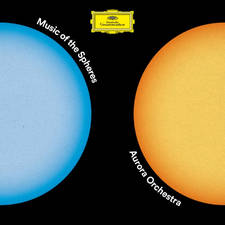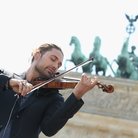David Garrett On Mixing Classical And Popular Music
Classical music does not need to be reinvented. It is already perfect. But of course, as with everything in life it does need to be discovered. So as a classical musician, it is my responsibility to help a lot of young people discover great classical music. In my experience classical music is as accessible as Rock, R&B, Jazz or whatever the more contemporary popular music may be.
But the greatest product in the world will not sell if you don’t go out and make it visible to audiences. It is unavoidable that one must go beyond the playing itself to help classical music survive. I have always felt that combining the past with the present is the best way to reach out to new audiences. Looking back over the history of music, great musicians have always been inspired by the past, while integrating their own thoughts and the popular music and cultural references of their time.
Mozart integrated contemporary and often controversial literature into his operas; Mendelssohn rediscovered Bach; and the great violin virtuosos of the 19th and 20th centuries – Paganini, Wieniawski, Sarasate, Ysaÿe, Kreisler and Heifetz – frequently used popular tunes as a base for many of their compositions.
At some point in the mid-20th century, a trend began for performers to focus more on playing and less on composing, which I believe has limited the exposure of classical music. As a modern violinist, I feel it is necessary to integrate your love for music, including contemporary popular music, into your playing to reach out to new audiences.
I see myself as part of the tradition begun by the likes of Paganini and Kreisler. You could argue, then, that I am more “traditional” than those violinists who only reflect the past. I try to adhere to the following guidelines when arranging music and performing...
1. Stay true to the composer
As an artist, you have the role of interpreter of wonderful music. The key is to stay true to what is written. Each composer gives you everything you need to know in the score. If you follow those guidelines, you are on the right track to serve the composer, which is what you are there to do. Classical music should never become a gimmick. Players have a responsibility to represent the composer to the best of their ability – this is always priority number one.
2. Portray your passion
And talking about your passion will always promote classical music. There is no shame in doing interviews expressing that you love what you do. If you play classical music, be proud of it – tell people what you do and expose them to your passion.
3. Dress your age!
I do not see a reason to dress up the way people dressed a hundred years ago. Neither did Mozart, who felt no need to dress like Bach, nor Brahms who did not dress like Mozart. All those musicians dressed according to the prevailing fashion of their time –and so do I!
4. Don’t be afraid of contemporary influences
I feel very strongly about integrating popular music that inspires me into my repertoire. Most of the classical musicians I know listen to and enjoy contemporary music, but some are held back by the conservative idea that popular music is inferior. Bernstein, Bartók, Bach, Mendelssohn, Beethoven and Prokofiev all integrated popular music into their music. If they did it, you shouldn’t feel wrong doing it either.
5. Have fun with it
Classical music was always meant to lift people’s spirits and entertain. Remember that classical music was always contemporary at some point. Human emotions have not changed much over the past 1000 years and music still serves the same purpose in acknowledging and enhancing those emotions. All music still has contemporary relevance.
CV
Age: 30 Birthplace: Aachen, Germany
Studied With: Itzhak Perlman and Ida Haendel
Professional Debut: With the Hamburg Philharmonic at the age of 10
Big Break: Aged 13, he became the youngest person to land an exclusive recording contract with Deutsche Grammophon
Prizes Won: The 2008 ECHO Klassik Award for his album Virtuoso
Did you know?
David makes an appearance in the 2010 Guinness Book of World Records – as the world’s fastest violinist.










